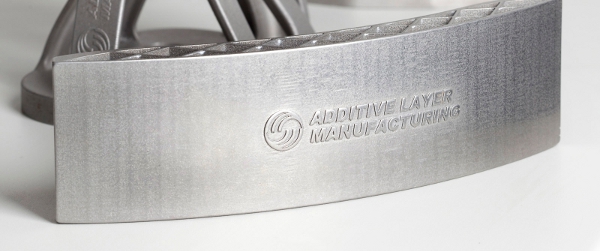
This morning, in the old meteorological office above London’s Science Museum, the European Space Agency showcased an array of complex metal parts made from additive manufacturing, or to me and you, 3D printing.
The ESA and the EU, together with other various industrial and educational partners, are developing the first large scale production methods to 3D-print with metal, and this morning’s conference was to tell us about the AMAZE program and what it’s doing to revolutionise manufacturing.
Until recently, 3D printing only worked with plastics, which has not proven very useful for industrial applications. However, the AMAZE project as it is called, short for Additive Manufacturing Aiming Towards Zero Waste & Efficient Production of High-Tech Metal Products, is working to create complex shapes that are impossible to manufacture with traditional casting and machining techniques.
"We are at the cusp of the third industrial revolution," said Hilde Loken Larsen of Norsk Titanium AS.
With their printing methods, little to no material is wasted and by cutting the number of steps in a manufacturing chain offers enormous cost benefits.
"Don’t think about the printing plastics that you’ll see in schools, this is the real stuff," said Nick Cox of the UK Space Agency.
Explaining how the AMAZE project, which began in January 2013 with factory sites across France, Norway, Germany Italy and the UK, is supported by a range of multidisciplinary clients, benefactors and manufacturers, Prof. David Jarvis said that multifaceted aspect is essential in making the 3D metal supply chain work. Making parts for spacecraft, airframes, robotic systems, and nuclear fusion technology is pushing the technology further and further.
"We want to make the best quality metal components ever," he said.
Aircraft door hinges. The top being of traditional cast, and the bottom showing a ligther, stronger 3D printed version.
Working across four main thematic areas (those being clean energy, green transport, EU security and next-gen manufacturing), the AMAZE project is looking at four to five different additive manufacturing processes such as wire-fed and powdered metal printing, Prof. Jarvis explained.
Researchers at AMAZE have already started manufacturing metal rocket and jet engine parts, with aerospace wing sections getting up to two meters in size.
With the additive manufacturing processes, the high-strength components are built with minimal waste, as only the metal needed is used. This differs from traditional casting techniques, where huge amounts of scrap are produced trying to achieve the final product.
"To produce one kilo of metal, you use one kilo of metal, not 20 kilos," said ESA’s Franco Ongaro, the director of Technical and Quality Management.
Looking to the future, Franco Ongaro said: "The real dream is to go into electronics."
The ESA showcase comes as London’s Science Museum opens its 3D printing exhibition.








